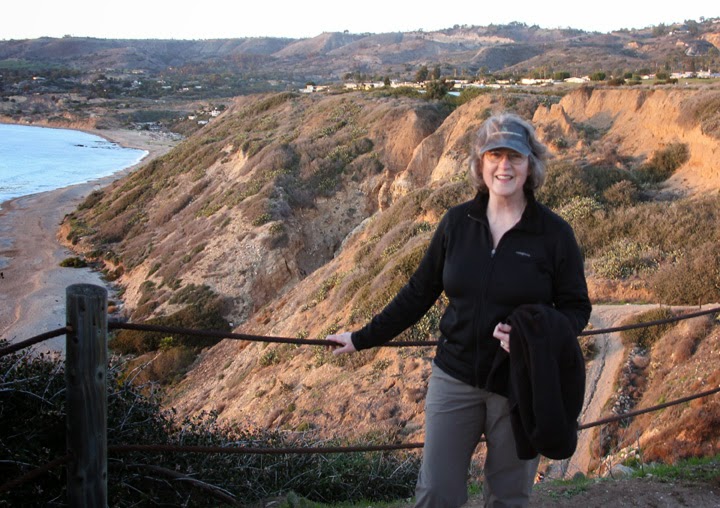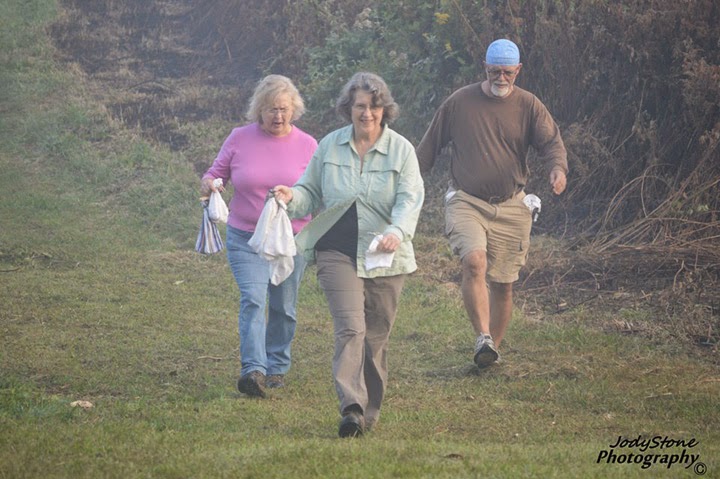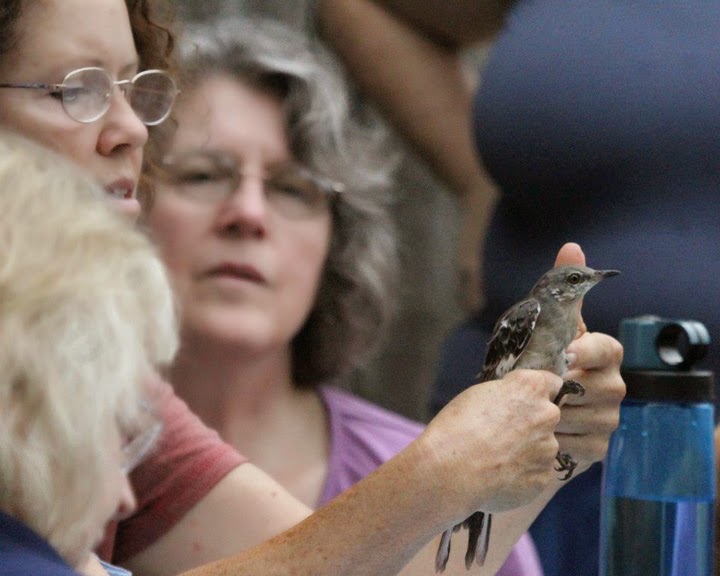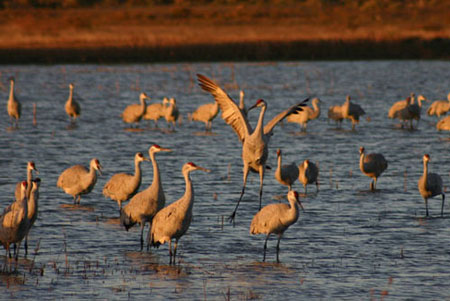It's impossible to hear that sound and not follow it out the door--the high-pitched ringing of a pileated woodpecker's call, especially when it comes from a tree right outside my window.
There is a family of three frequently foraging in my yard and around its wooded edges. Above you see the adult female. (I can distinguish her from the younger female only by the sequence of behaviors that followed.)
They visit older deciduous trees, prying the bark loose or excavating, feeding on larvae and insects, and sometimes foraging on the ground on decaying stumps and fallen limbs. The three family members consist of two females and a male, which I assume to be the mature pair and one of the season's off-spring. Needless-to-say, it is a real treat to spot one calling pileated woodpecker, and hear more calls from your left and your right, until you realize you are in the midst of a foraging family. The male, showing his red facial stripe and red crest, is in the foreground in the images above and below. The female with a lesser crest, black on her forehead, and black facial stripe, is in the background.
On this particular occasion, March 18th, I observed the male foraging among leaves and fallen branches in a wooded area at the edge of the lawn, flipping leaves in the air as he foraged. The females were foraging on nearby trunks. One female, believed to be an off-spring, flew into a wooded edge to the east, while the other female remained near the male, foraging a nearby trunk, and subsequently, dropping to the ground to forage near him.
It is well known that during breeding season many mated pairs of birds perform nuptial feedings, perch close to each other, or forage together to strengthen the pair bond during nesting and incubation. I realized after watching this pair for a while that there was more going on than simple feeding.
After foraging near the male for a while, the female hopped onto a stump, and then moved to a near trunk, landing close to the ground on the opposite side and only partially in view from where I stood. Above you see her just after she's lands on the stump and is about to move again. Even though she is partially hidden by undergrowth, her body position gives you a good look at the length of her tail brace. While the two foraged together, they exchanged whimpering calls, lower pitched, solicitous calls that seem to have a contact function.
The male continued to forage but frequently looked in the direction of the female. In the following sequence of images you see him as he raises his crest in a courtship display and joins the female on the other side of the trunk for copulation.
An updated listing of bird breeding chronology in Tennessee (2003), supplemental to the Atlas of Breeding Birds of Tennessee by Charles P. Nicholson (University of Tennessee Pres, 1997), lists nesting and eggs for pileated woodpeckers occurring from April 4 to May14. The atlas nest and egg record is based on direct observation.
I am not optimistic about discovering this pair's nest, though I feel certain it is nearby (likely in the dead stub of a tree anywhere from 15-70 ft high). The wooded areas that surround my yard are steep, their gradients likely what saved them from development, also saving some of the old growth that makes good nesting habitat for this family of woodpeckers. This same characteristic, however, makes extensive wandering in search of a nest, impossible.
Pileated woodpeckers are said to maintain a strong pair bond throughout the year, and that certainly seems the case with this pair. I have observed this family foraging together on many occasions throughout the winter. Since nesting season has begun, I will be interested in seeing how much longer the off-spring remains with the pair.
Above, male pileated woodpecker with raised crest and red cheek stripe. Below, female with black forehead and black cheek stripe.
Links and Resources:
To hear one of the calls of a pileated woodpecker click here. There are several other calls, one with a trailing echo, the other, a whimpering style call, that is lower in pitch and more solicitous.
Cornell's site on the pileated woodpecker.
Visit my other pileated woodpecker posts on this blog.
Wednesday, March 21, 2012
Monday, March 5, 2012
Join Me! Bird Attitudes: Inspiring Art and Conservation
Join me, Wednesday, March 7th, at the Knoxville Tennesseee Ornithological Society meeting (KTOS) for an evening of photos, art and stories as I show you how birds inspire my art and my passion for conservation.
Birds are funny, fun and fascinating. From the top of their heads to the pads on their feet, a birds size, color and shape offer many clues into its life style and habits. Add to that, the personality revealed through behavior and you have the inspiration for all kinds of bird-related pursuits, including advocacy and conservation.
Join me as I share my photography, art and stories, and show you just what inspires me to pick up my brushes and paint.
KTOS Meeting information--Wednesday evening, March 7th, 6:45 pm.
Directions
Birds are funny, fun and fascinating. From the top of their heads to the pads on their feet, a birds size, color and shape offer many clues into its life style and habits. Add to that, the personality revealed through behavior and you have the inspiration for all kinds of bird-related pursuits, including advocacy and conservation.
Join me as I share my photography, art and stories, and show you just what inspires me to pick up my brushes and paint.
KTOS Meeting information--Wednesday evening, March 7th, 6:45 pm.
Directions
Labels:
bird art,
bird presentation,
conservation,
inspiration,
Vickie Henderson
Subscribe to:
Posts (Atom)
Ocean Trail at Palos Verdes Nature Preserve, California--2015

Bird-banding at Seven Islands State Birding Park--2014

Photo courtesy of Jody Stone
Bird-banding at Seven Islands

Photo courtesy of Karen Wilkenson
Enjoying Gray Jays in Churchill!--2014

Photo courtesy of Blue Sky Expeditions
Smithsonian National Zoo with one of my Whooping Crane banners and son, John--2014

The Incredible Muir Woods near Stinson Beach, CA--2014

Photo courtesy of Wendy Pitts Reeves
Me and Denali--2012

Photo courtesy of Bob King
For the Love of It...
...the sage sees heaven reflected in Nature as in a mirror, and he pursues this Art, not for the sake of gold or silver, but for the love of the knowledge which it reveals.
Sendivogius (1750)
Sendivogius (1750)
Your Uncapped Creativity...

"There is a vitality, a life force, an energy, a quickening that is translated through you into action; and because there is only one of you in all time, this expression is unique. If you block it, it will never exist through any other medium and it will be lost. The world will not have it. You must keep that channel open. It is not for you to determine how good it is, nor how valuable. Nor how it compares with other expressions. It is for you to keep it yours, clearly and directly." ----the great dancer, Martha Graham















